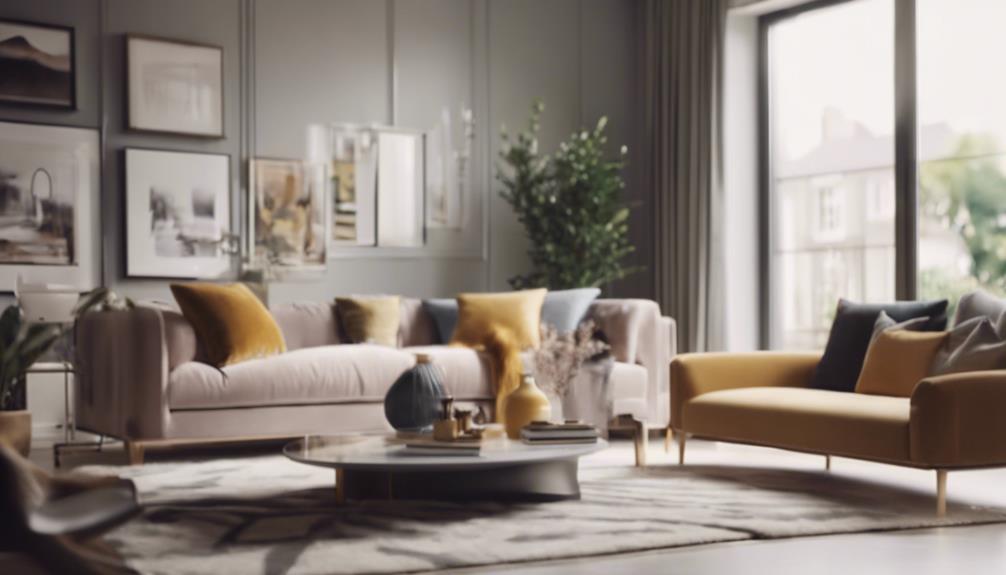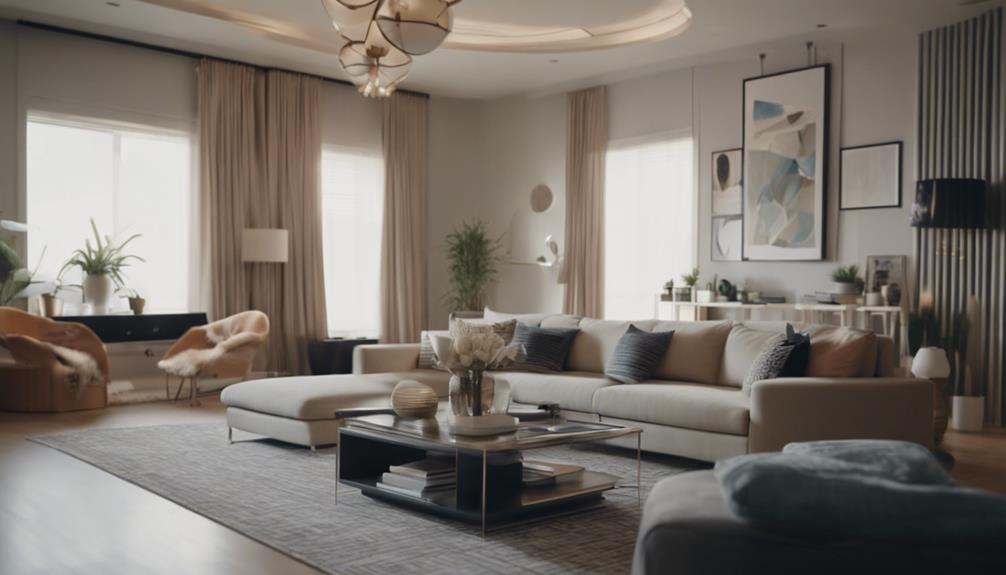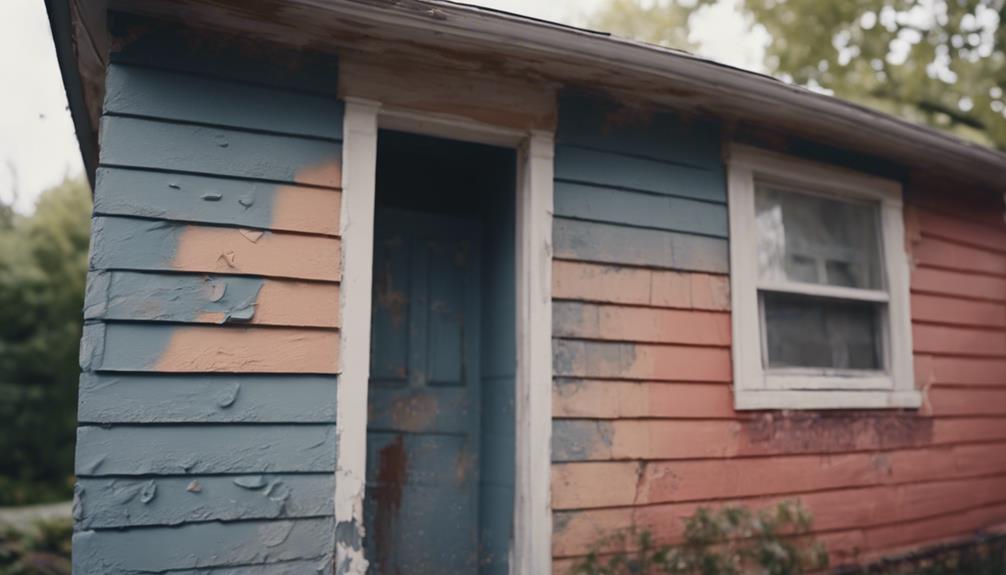When you need to clean the interior of your car, consider professional interior detailing services. These services offer a thorough cleaning using specialized tools and techniques to achieve a flawless finish. They can restore the original color and texture of your car while also prolonging the lifespan of its interior components. You will be impressed by the results! If you are interested in learning more about premium cleaning options, odor removal techniques, or even leather repair services, keep exploring. It’s all about ensuring your car looks and feels its best both inside and out.
Key Takeaways
- Professional car interior cleaning services offer thorough vacuuming and sanitization for a pristine interior.
- Mobile car wash services provide convenient options with valet services for pick-up and drop-off.
- Membership plans for unlimited car washes simplify maintenance routines with various benefits.
- Consider reputation, range of services, pricing, and quality products when choosing a cleaning service.
- Regularly clean your car's interior by vacuuming, prompt stain removal, and implementing a cleaning schedule.
Professional Interior Detailing Services
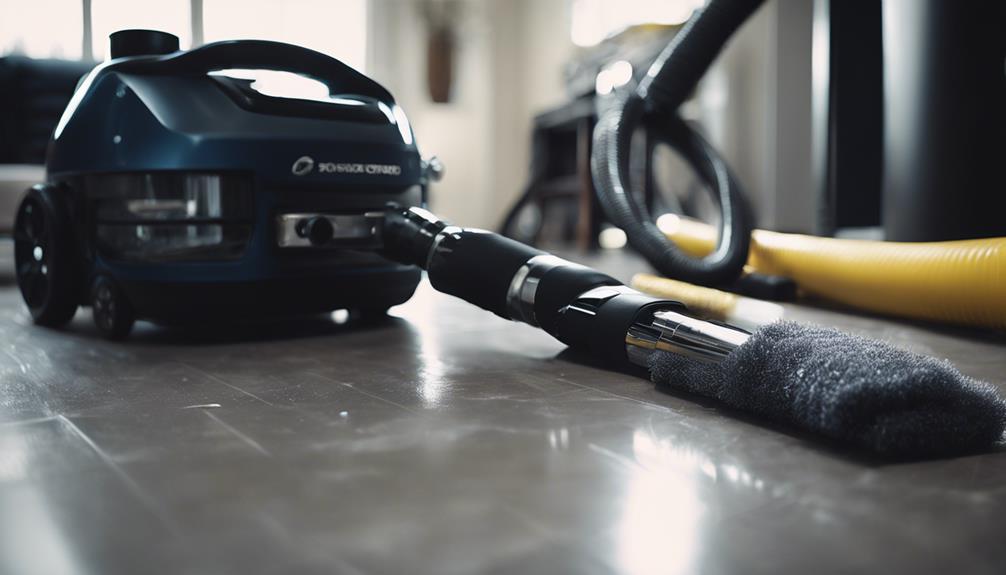
When you choose our expert interior detailing services, your car's interior will receive a high-quality treatment that includes thorough vacuuming, shampooing, and sanitization using specialized tools and techniques. Our detailing services are designed to provide a deep clean for your vehicle's interior, ensuring that every nook and cranny is free of dirt, dust, and debris. From the seats to the carpets and floor mats, we use professional-grade equipment to lift stains and restore freshness.
Our interior cleaning process goes beyond just surface dirt removal. We utilize a specialized pneumatic driven system for debris removal, a 212 ° F foam generator for deep fabric cleaning, and eco-friendly 212 ° F Euro dry-steam for sanitization. These advanced tools allow us to tackle tough stains and eliminate bacteria, leaving your car's interior not only clean but also hygienic.
With our detailing services, you can enjoy a pristine driving environment that looks and feels brand new. Trust us to provide the deep clean your car deserves.
Premium Interior Cleaning Options
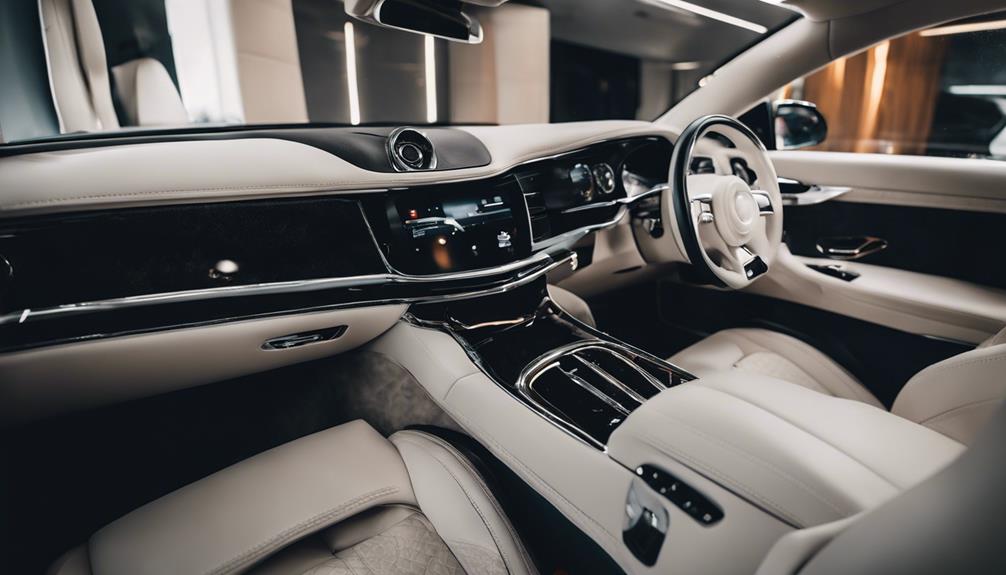
For a superior interior cleaning experience, consider our premium detailing options that cater to luxury vehicles and offer specialized services for a thorough and meticulous clean. Our premium interior detailing services utilize advanced techniques such as a pneumatic system for debris removal and a 212 ° F foam generator for deep fabric cleaning.
Here are three reasons why our premium interior cleaning options stand out:
- Specialized Services: We provide specialized services like smoke and odor removal using the DrivePur Protection System and T102 Titanium Dioxide starting at $49.
- Hair Removal and Leather Repair: Enjoy a hair removal service starting at $39 and expert leather repair starting at $139 to keep your interior looking pristine.
- Luxury Vehicle Treatment: Our services cater to luxury car brands like Bentley, Ferrari, Lamborghini, Porsche, and Rolls Royce, ensuring they receive preferred treatment for a truly premium experience.
When it comes to cleaning your car's interior, our premium options go above and beyond, using hot water and specialized equipment to give your vehicle the royal treatment it deserves.
Mobile Car Wash Services Available
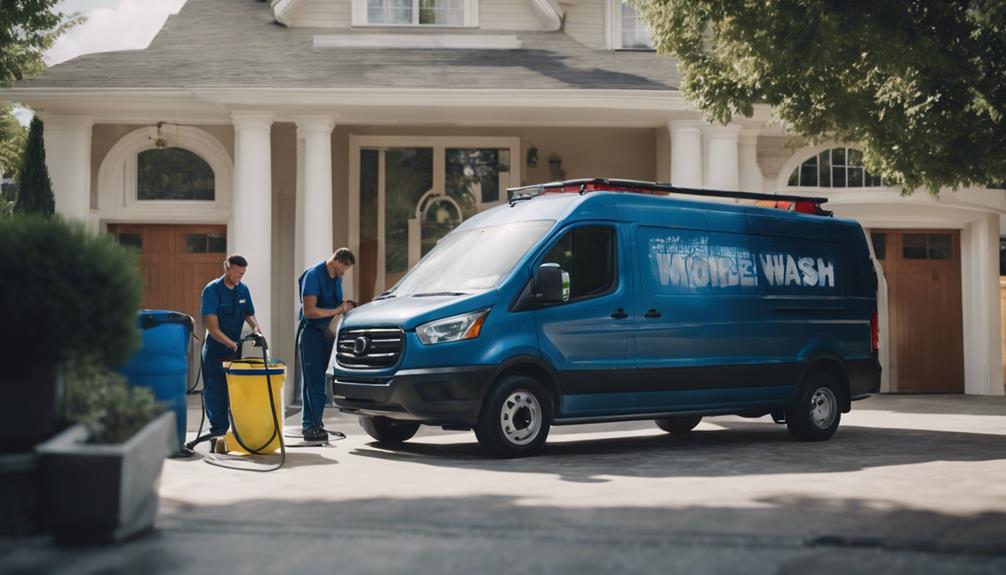
Considering our premium interior cleaning options, you can now explore the convenience and flexibility of our mobile car wash services available to cater to your busy schedule. Our mobile services bring interior detailing right to your doorstep, offering you the ultimate convenience.
With valet mobile services for pick up and drop off, getting your car cleaned has never been easier. Imagine having unlimited car washes on the go with our membership plans, ensuring your vehicle always looks its best effortlessly.
Additionally, by choosing our mobile services, you aren't only benefiting from convenient solutions but also supporting the Care for a Child's Heart Foundation as we give back to the community. Operating from 8:00 am to 6:00 pm, our flexible service hours accommodate your needs seamlessly.
Experience the ease of getting your car meticulously cleaned without disrupting your day – our mobile services are here to make your life simpler and your car sparkling clean.
Full Detailing With Shampooing Services
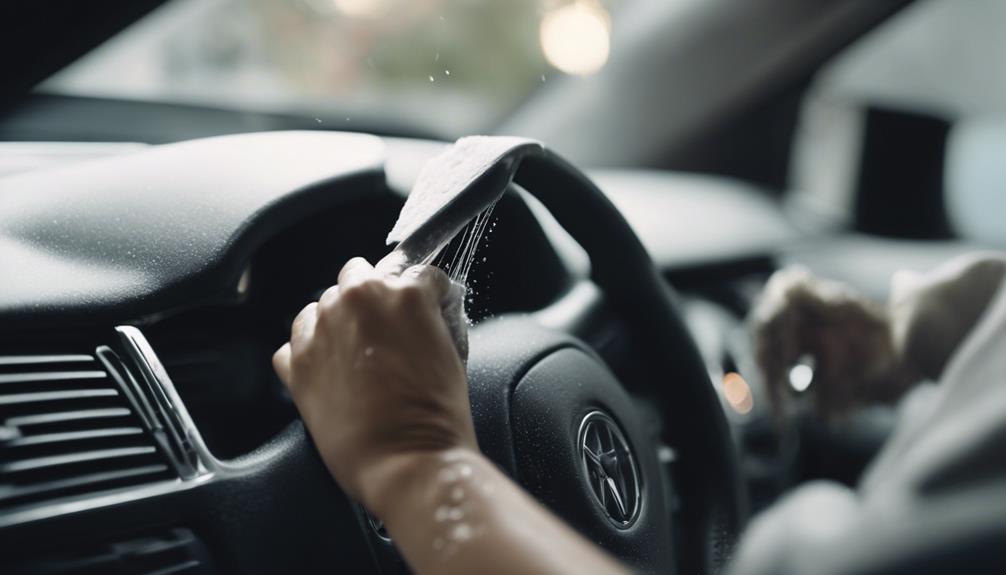
When it comes to getting your car's interior spotless, full detailing with shampooing services is the way to go.
Discover the benefits of shampooing, learn essential tips for cleaning interior fabrics, and explore the techniques used by professionals for a high-quality finish.
Say goodbye to stubborn stains and odors, and hello to a fresh and revitalized interior with expert detailing services!
Shampooing Benefits Explained
Shampooing as part of full detailing services effectively removes deep-seated dirt, stains, and odors from your car's interior. Here are three reasons why shampooing is beneficial for your car:
- Thorough Cleaning: Specialized cleaning solutions and equipment guarantee a deep and thorough clean, leaving your car looking and smelling fresh.
- Restoration: Shampooing helps rejuvenate carpets, upholstery, and fabric surfaces, restoring their appearance and extending their lifespan.
- Hygiene: By targeting tough stains, spills, pet hair, and allergens, shampooing promotes a clean and healthy interior environment for you and your passengers.
Investing in professional shampooing services as part of detailing packages offers a holistic solution for maintaining a pristine car interior.
Interior Fabric Cleaning Tips
To enhance the cleanliness and freshness of your car's interior, incorporating fabric cleaning tips into your full detailing routine with shampooing services is vital. When cleaning your car's interior fabric, remember to use specialized products and equipment to guarantee a thorough and effective cleaning process. Here are some tips to help you achieve the best results:
| Fabric Cleaning Tips | Description | Benefits |
|---|---|---|
| Use a gentle brush | Gently scrub the fabric to remove dirt and stains | Prevents damage to the fabric |
| Vacuum first | Remove loose dirt and debris before cleaning | Allows for a deeper clean |
| Test in inconspicuous area | Ensure the cleaning product doesn't harm the fabric | Avoid potential discoloration |
| Follow product instructions | Use the right amount of product for effective cleaning | Prevents over-saturation |
| Allow to dry completely | Make sure the fabric is fully dry before using the car | Prevents mold and mildew growth |
Professional Detailing Techniques
For professional detailing techniques that guarantee a pristine interior, expert detailers employ specialized equipment and products to thoroughly clean and revitalize your car's surfaces. When opting for full detailing with shampooing services, you can expect:
- Thorough Interior Cleaning: Professional detailers go beyond surface cleaning, ensuring seats, carpets, and mats are deeply cleaned with specialized shampoos.
- Leather Surface Treatment: Services may include conditioning and deep cleaning of leather surfaces to bring back their original luster and softness.
- Stain and Odor Removal: Expert detailers use specialized products to efficiently eliminate tough stains and odors, leaving your car smelling fresh and looking brand new.
These techniques not only enhance the appearance but also create a hygienic environment inside your vehicle.
Membership Plans for Unlimited Washes
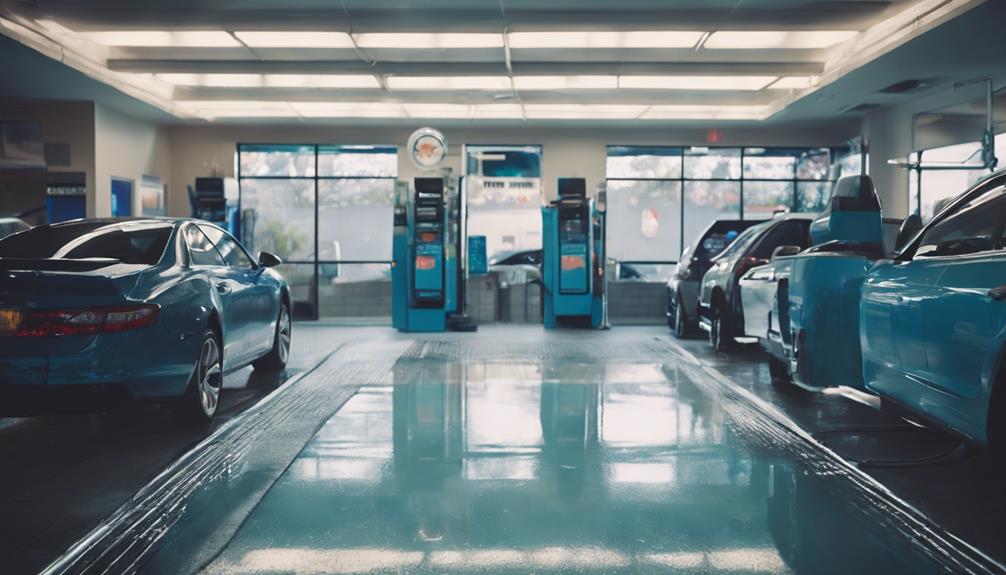
Consider opting for a membership plan to enjoy unlimited car washes at your convenience. These plans can save you time and money while keeping your vehicle looking its best. Take a look at the table below to compare different membership options available:
| Membership Plan | Price | Benefits |
|---|---|---|
| Basic | $25/month | Unlimited exterior washes |
| Premium | $40/month | Unlimited exterior and interior washes |
| VIP | $60/month | Unlimited exterior and interior washes, valet services for pick-up and drop-off |
Membership plans not only offer great value but also ensure that your car stays clean without the hassle of scheduling individual washes. Plus, with valet services provided, you can have your car cleaned while you go about your day. So, why not simplify your car maintenance routine and sign up for a membership plan today?
Community Support Initiatives Offered

Considering your interest in our membership plans for unlimited car washes, it's worth noting the active community support initiatives we offer. These initiatives aren't only about keeping your car clean but also about giving back to the community. Here are a few ways we support the community:
- Valet Mobile Services: We provide convenient pick-up and drop-off services, making it easier for you to get your car washed without disrupting your busy schedule.
- Membership Plans: By offering unlimited washes for regular customers, we guarantee that you can keep your car clean while also supporting our community initiatives like the Care for a Child's Heart Foundation.
- Business Hours: Our extended hours from 8:00 am to 6:00 pm allow for accessibility to customers, ensuring you can always find time to support our community efforts.
At our establishment, we take pride in not only providing excellent car wash services but also in making a positive impact on the community.
Specialized Odor Removal Techniques
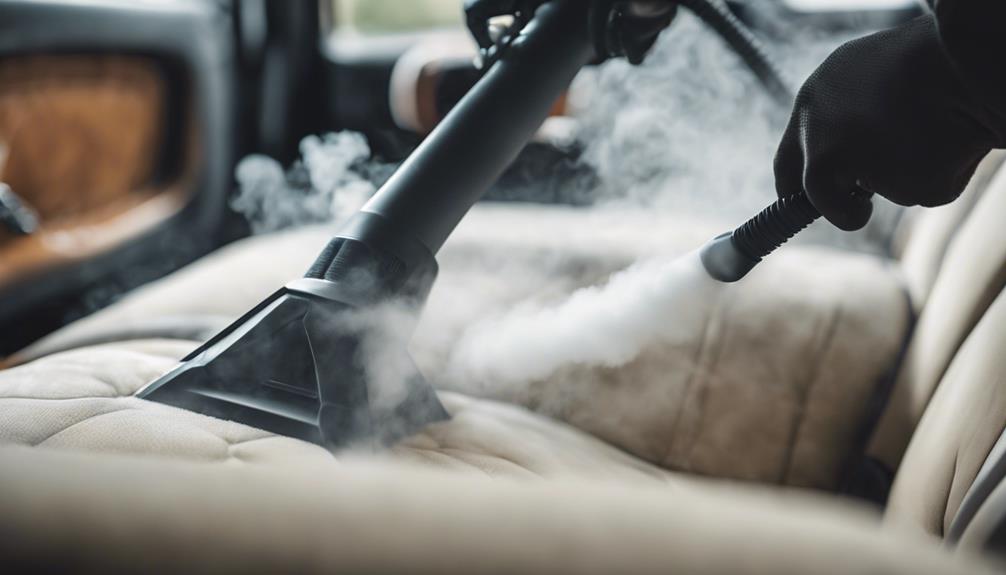
When it comes to tackling stubborn odors in your car, specialized techniques are key.
Professional cleaning methods like deep cleaning and sanitization with eco-friendly dry-steam can effectively eliminate unwanted smells.
Odor Elimination Techniques
To effectively eliminate stubborn odors from your car interior, specialized techniques like using products such as DrivePur Protection System and T102 Titanium Dioxide are crucial. These techniques target specific odors like smoke, pet smells, and other persistent odors. When dealing with unpleasant smells in your car, consider the following specialized odor elimination techniques:
- DrivePur Protection System: This product uses advanced technology to neutralize odors at the molecular level, leaving your car smelling fresh and clean.
- T102 Titanium Dioxide: Known for its powerful odor-absorbing properties, T102 Titanium Dioxide can effectively eradicate even the toughest odors from your car interior.
- Thorough Cleaning: Combine specialized products with a thorough cleaning regimen to ensure all surfaces are treated and sanitized, effectively eliminating odors from your car.
Professional Cleaning Methods
Eliminating stubborn odors from your car interior requires professional cleaning methods that employ specialized odor removal techniques like the DrivePur Protection System and T102 Titanium Dioxide.
The DrivePur Protection System harnesses advanced technology to neutralize and eliminate persistent odors effectively. On the other hand, T102 Titanium Dioxide acts as a potent component that targets and breaks down odor-causing molecules, ensuring a fresh and clean environment inside your vehicle.
These specialized techniques guarantee thorough and long-lasting odor removal, leaving your car interior smelling clean and fresh. Professional detailers utilize these advanced methods to tackle tough odors, enhancing the overall cleanliness and comfort of your vehicle.
Say goodbye to unpleasant odors and welcome a rejuvenated car interior with these specialized odor removal techniques.
Leather Repair and Restoration Services
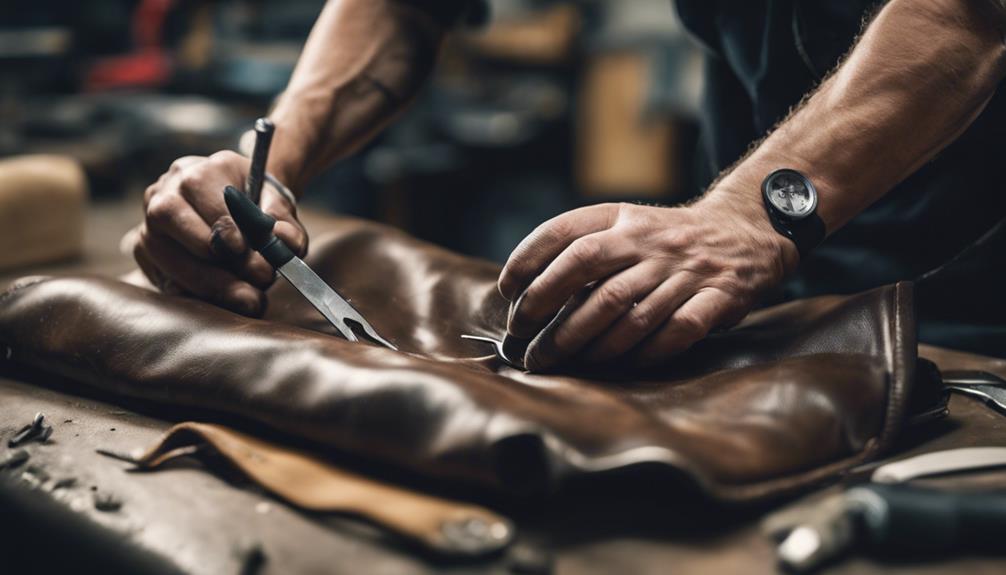
Leather repair and restoration services offer a range of specialized treatments tailored to luxury car brands like Bentley, Ferrari, Lamborghini, Porsche, and Rolls Royce. These services include dyeing, repair processes, conditioning, and protection cream application to guarantee your leather interior looks pristine. The restoration services cater specifically to high-end vehicles, providing deep cleaning, repair, and protection techniques to maintain the luxurious feel of your car.
Here are three key benefits of opting for leather repair and restoration services:
- Preservation of Luxury: By investing in these services, you can extend the lifespan of your leather interior, preserving the elegance and sophistication that comes with luxury car brands.
- Enhanced Aesthetics: Through specialized treatments, your leather interior can regain its original beauty, removing signs of wear and tear and bringing back the luxurious look.
- Value Retention: Regular repair and restoration services help maintain the value of your luxury vehicle, ensuring that it stays in top condition for years to come.
Consider these services to keep your luxury car looking its best.
Spot Stain Removal Solutions
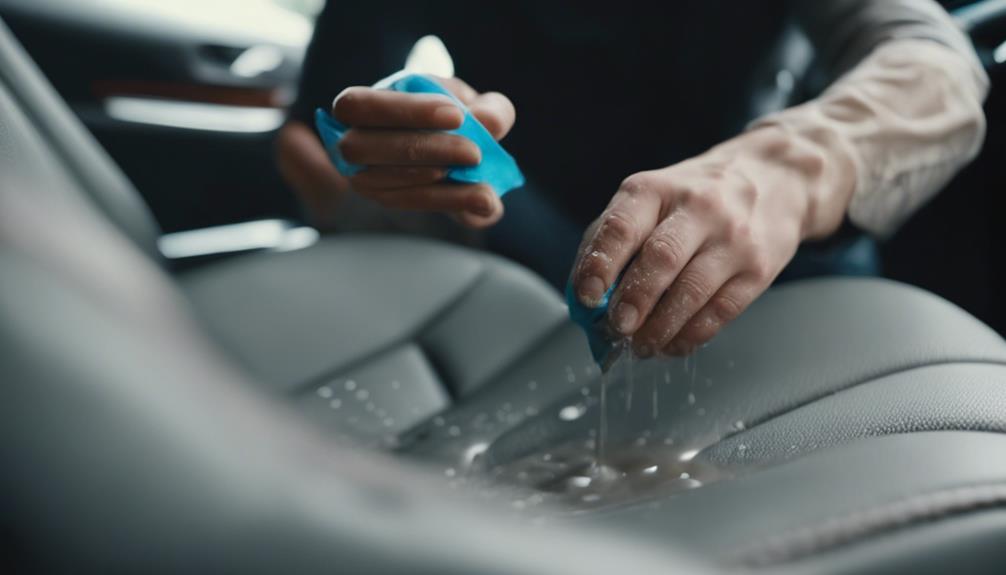
When dealing with stubborn stains in your car's interior, quick stain removal solutions are key to keeping your vehicle looking fresh and clean. From DIY cleaning hacks to recommended products, there are various ways to tackle those pesky spots effectively.
Whether it's a coffee spill on your carpet or a grease mark on your seat, knowing the right techniques can help you maintain a spotless interior.
Quick Stain Removal
Utilizing specialized equipment and targeted products, spot stain removal services provide effective solutions for removing specific stains like coffee, wine, grease, and pet accidents from your car's interior.
Here are three reasons why quick stain removal services are a game-changer:
- Efficiency: Professional detailers use advanced techniques to swiftly tackle stubborn stains, saving you time and effort.
- Precision: With their expertise, they can identify the best approach for each type of stain, ensuring thorough removal without causing damage.
- Enhanced Appearance: By ridding your car of unsightly stains, these services help restore the freshness and beauty of your vehicle's interior, making it look and feel brand new.
DIY Cleaning Hacks
To keep your car interior looking fresh and clean, try these DIY Cleaning Hacks for spot stain removal solutions.
For stubborn stains like coffee or wine spills, create a mixture of vinegar and water.
Sprinkle baking soda on fabric surfaces to absorb odors, then vacuum it up for a fresher interior.
Use club soda to lift stains from upholstery by gently dabbing it with a cloth and blotting it dry.
Combat grease stains on surfaces like cup holders or door panels by mixing lemon juice with baking soda to create a natural paste.
Clean and disinfect hard surfaces like steering wheels or gear shifts in your car effectively by using rubbing alcohol on a cloth.
Keep your car looking spotless with these simple and effective DIY cleaning hacks.
Product Recommendations
Looking for effective spot stain removal solutions for your car interior? When dealing with tough stains like coffee spills, food stains, or pet accidents, you need reliable products that can get the job done. Here are some recommendations to help you tackle those stubborn spots:
- Multi-Surface Safety: Opt for spot stain removal products that are safe for various materials such as fabric, leather, and vinyl. This guarantees effective stain removal without causing damage.
- Enzymatic Power: Consider stain removers with enzymatic formulas that target organic stains like pet urine, blood, and food residues. These formulas break down tough stains for a thorough clean.
- Convenient Application: Look for products available in spray bottles or wipes for easy application and quick cleanup of minor stains on car upholstery and carpets.
Before and After Interior Cleaning Shots
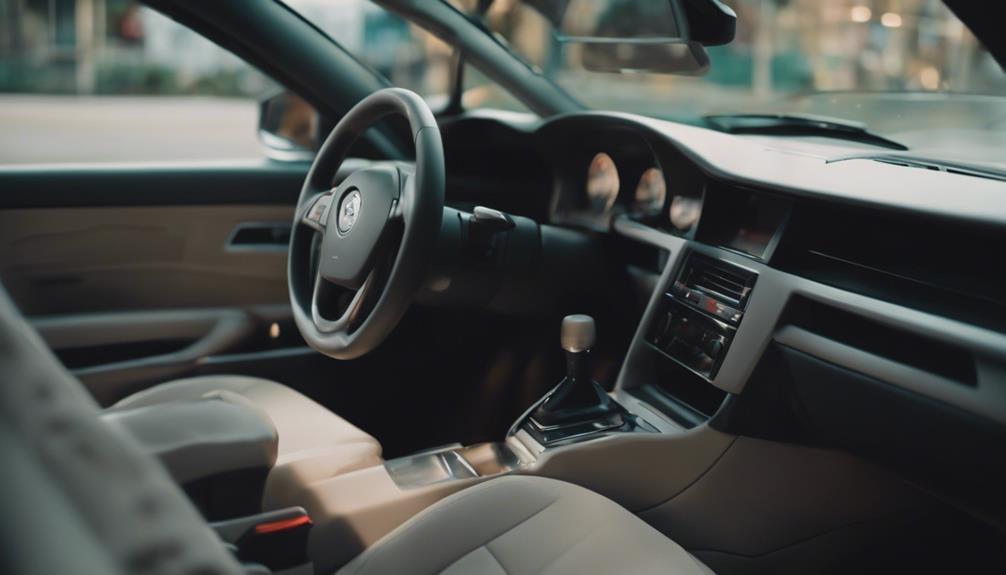
Witness the dramatic transformation captured in the before and after interior cleaning shots, showcasing the remarkable removal of stains and dirt from seats, carpets, and mats. These visual references serve as powerful testimonials to the effectiveness of the interior cleaning service. The images reveal a striking change from a grimy, worn-out interior to one that looks almost brand new. By comparing the before and after shots, you can see how the cleaning process not only eliminates visible stains but also revitalizes the entire surface, making it look fresh and well-maintained.
The pictures highlight the thoroughness and quality of the interior cleaning results. They demonstrate how professional cleaning can bring back the original color and texture of your car's interior elements. From spilled drinks on the seats to mud on the carpets, the transformation is truly impressive. These shots provide tangible proof of the service's capability to restore your car's interior to its former glory. So, next time you consider getting your car cleaned, remember to check out these before and after shots for a preview of the fantastic results you can expect.
Frequently Asked Questions
How Do You Wash the Inside of a Car?
To wash the inside of a car, start by vacuuming to get rid of dirt and dust.
Next, use an interior cleaner to wipe down surfaces like the dashboard and door panels.
For deep cleaning, shampoo carpets and upholstery.
Don't forget to clean and condition leather or vinyl to keep them looking sharp.
Use brushes, cloths, and swabs for those hard-to-reach spots.
With these steps, your car's interior will shine like new!
How Much Does Car Detailing Cost in Houston?
Car detailing costs in Houston vary based on your car's size and condition, ranging from $50 for basic services to $340 for a full interior cleaning. Additional specialized services like smoke and odor removal (starting at $49) and leather repair (beginning at $139) cater to specific needs.
Premium detailing services are available for luxury brands like Bentley and Ferrari. Different packages, such as Super Clean and Full Detail, offer a variety of services to suit your preferences and budget.
Is It OK to Clean the Interior of a Car?
Cleaning the interior of your car isn't only essential but vital for a pleasant driving experience. It helps remove dirt, grime, and bacteria, maintaining a hygienic environment.
Regular cleaning also enhances passenger comfort and boosts the car's resale value. Using specialized products and tools for tasks like vacuuming, wiping, and conditioning guarantees effective results.
What Is the Best to Clean the Interior of a Car?
To clean the interior of your car effectively, start by removing loose items and vacuuming thoroughly. Use proper tools and products to shampoo seats, carpets, and floor mats for a deep clean.
Clean plastic and leather surfaces with suitable agents to remove dirt and grime. Guarantee streak-free windows and mirrors by using the right solutions.
Professional services range from $200 to $340 based on your vehicle's size and condition.
Conclusion
So, next time your car's interior needs a good cleaning, head over to our professional detailing services for a high-quality experience.
With premium cleaning options, mobile services, and even membership plans for unlimited washes, we've got everything you need.
Say goodbye to those pesky stains and odors with specialized techniques and leather repair services. Your car will look and smell brand new in no time!
Don't miss out on the chance to give your ride some TLC.



